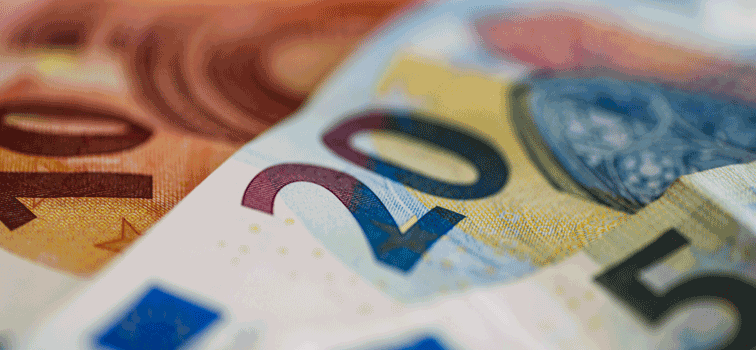Suspect Counterfeits (National Analysis Centre)

The National Analysis Centre (NAC) analyses suspect counterfeit banknotes and coin sent to the Central Bank. Suspect counterfeits are examined, recorded and monitored as part of a co-ordinated effort to address counterfeiting challenges to the euro. Nationwide training is provided to professional cash handlers, members of An Garda Síochána, customs officials and other bodies on counterfeit detection.
How do I Check if my Note is a Counterfeit?
There are many security features incorporated into euro banknotes that make them difficult to recreate. Many of these features can be checked manually using the Feel-Look-Tilt test.
Feel
- The paper is crisp and firm
- The paper will have raised ink areas on the front of the note.
Look
Hold the note up to a light and:
- Hold the note up to the light and look for watermarks (see-through areas of the note):
- Architectural design similar to the main design of the note.
- A number watermark underneath.
- Barcode watermark in the centre (Euro Series 1 notes only).
- Europa portrait (Euro Series 2 notes only).
- Security thread down the centre of the note with perforations of denomination.
- Perforations in the holographic foil showing the denomination, euro symbol and Europa portrait (Euro Series 2 notes only).
- See through number at the top left of the note (Euro Series 1 notes only).
Tilt
- The holographic stripe or patch will change images and colours.
- The iridescent stripe on the back of the lower denominations will shine and fade (Euro Series 1 notes only).
- The opti-variable ink covering the numeral on the back of the higher denominations will change colour (Euro Series 1 notes only).
- The emerald number in the bottom left corner on the banknote’s front side displays an effect of the light that moves up and down. The number also changes colour from emerald green to deep blue (Euro Series 2 notes only).
The public security features of banknotes are fully described on the official ECB website Euro Banknotes Security Features.

Source: ECB.
ES1 & ES2 € banknote security features can also be explored using the ECB’s
e-learning tools "Knowledge of Banknotes" and Euro Cash Academy Training Material.
Counterfeit Submission Form | xls 54 KB
How do I Check if my Coin is a Counterfeit?
To examine suspect coins the following techniques could be used:
Visual inspection (possibly with a magnifying glass).
As compared with a known genuine coin, the suspect coin will have:
- Poor quality image detail.
- Different colour ring and/or core.
- Edge lettering missing, incorrect spelling or font (using similar country coin).
- Different sizes.
- Thickness, diameter.
- Different sized ring or core.
- Different weight.
Hardness Test
Some counterfeits bend, try bending the coin.
Magnet Test
- Genuine €2 and €1 coins are slightly magnetic.
- Using a magnet you should be able to lift the coin up, but with the weight of the coin and the slight magnetism you should be able to shake the coin off the magnet with ease.
- Most counterfeit €2 and €1 coins are either very magnetic, non-magnetic, or just the ring is magnetic due to the materials used.
- Genuine 50 cent coins are non-magnetic.
- You could also compare the suspect note or coin with a known genuine specimen.
View further details about euro coins.
What to do if you Suspect you Have a Counterfeit Banknote or Coin?
If you believe you are in possession of a suspect counterfeit you are obliged to submit it to your local financial institution, the Gardaí, or the Central Bank’s National Analysis Centre (NAC) or Coin National Analysis Centre (CNAC). National Analysis Centre, Central Bank of Ireland, Currency Centre, Sandyford Road, Dublin 16,D16 K280. A receipt should be obtained to confirm your submission of the suspect counterfeit as no refund will be given at this time.
What Next?
If the banknote or coin is deemed genuine value will then be given through your local institution where you received the receipt of lodgement. If sent to us at the Central Bank, a letter will be issued acknowledging the submission. If the suspect item is subsequently deemed genuine the Central Bank will contact you to arrange reimbursement.
For further queries, please contact us.